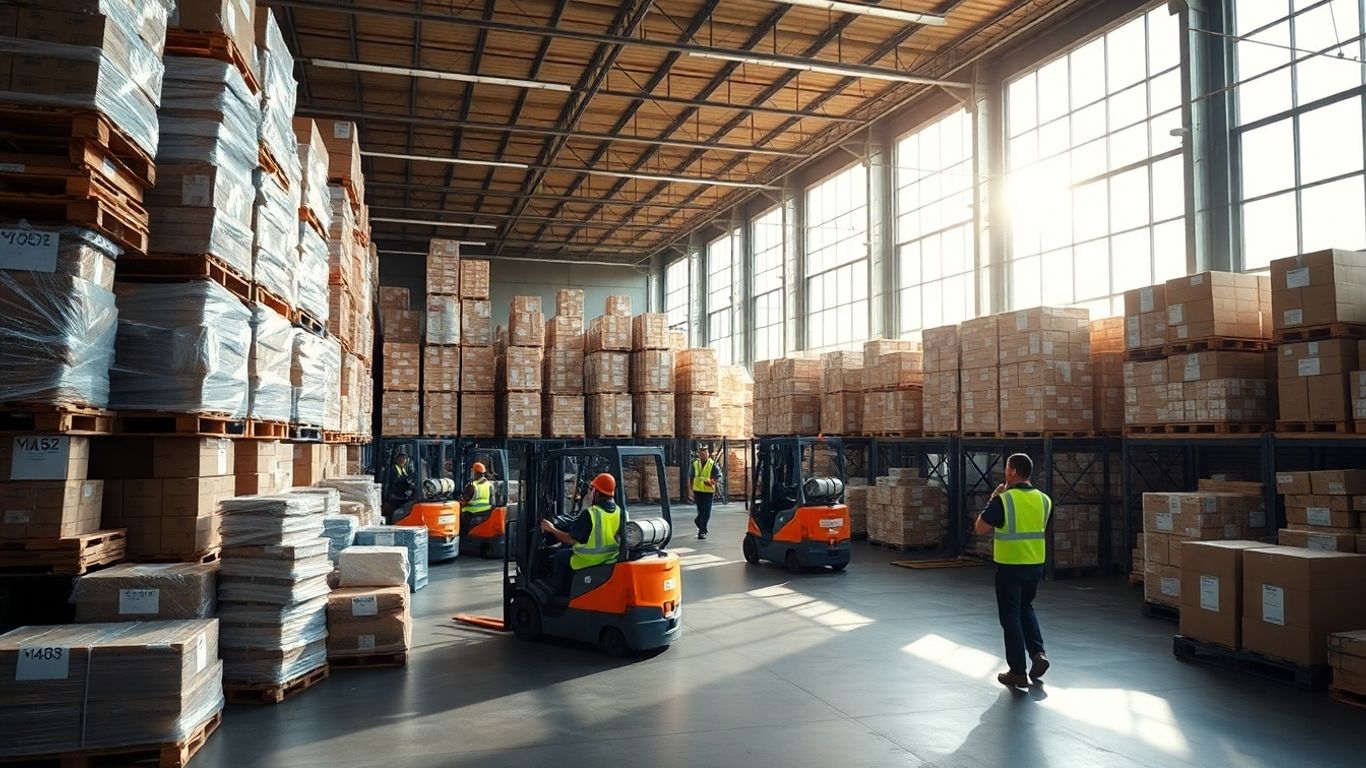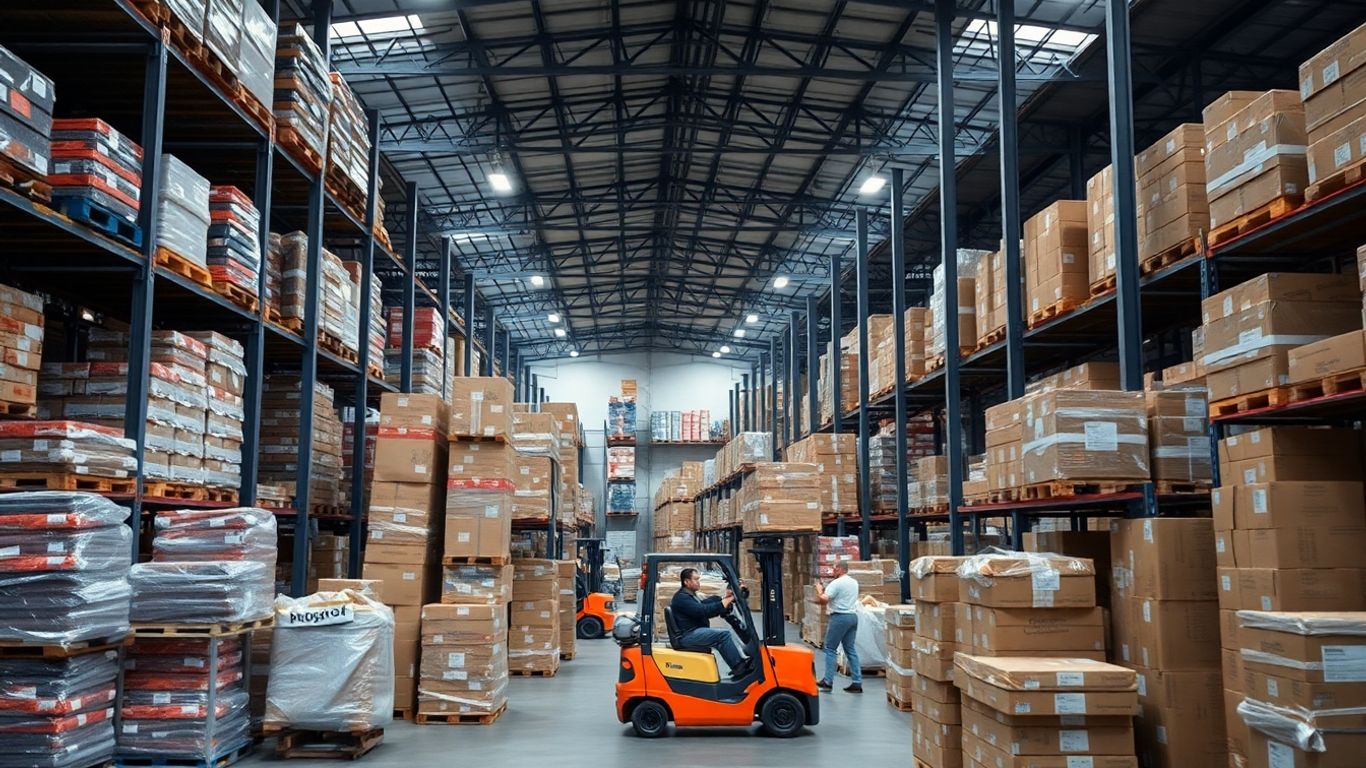
Thinking about getting into supply chain management? It's a field that's super important for businesses these days. If you're looking to get a handle on how things move from start to finish, a material management course could be just the ticket. This guide will walk you through what you can expect and why it's a good idea.
Key Takeaways
- A material management course teaches you how to manage the flow of goods, from where they start to where they end up with customers.
- You'll learn about planning, sourcing, making, and moving products to keep costs down and get things done efficiently.
- The course covers a lot, including how to deal with problems, new technology, and managing operations and delivery.
- Getting this kind of training can really help your career, as companies need more people who know supply chains well.
- You'll gain practical knowledge about management systems, how to run operations, and picking the right tech for your business.
Understanding the Core of Supply Chain Management
So, what's really going on when we talk about 'mastering' supply chain management? It's not just about moving boxes from point A to point B. It's about orchestrating the entire journey of a product or service, from the very first raw material to the hands of the customer. Think of it as a complex dance where every step needs to be perfectly timed and executed. This involves a lot of planning, figuring out where to get your stuff, how to make it, and then getting it to people without a hitch.
Defining Mastering Supply Chain Management
At its heart, mastering supply chain management means getting a grip on how goods and services move. This isn't just about one company; it's about all the different players involved – the suppliers' suppliers, the manufacturers, the distributors, and finally, the folks buying the product. It's about making sure all these pieces work together smoothly. The main goal? To keep costs down while making sure things run as efficiently as possible, and ultimately, to make customers happy. It's a big puzzle, and putting it together right gives businesses a real edge.
The Flow of Goods and Services
This flow is the lifeblood of any business. It's how raw materials get transformed into something useful and then delivered. We're talking about everything from the initial idea to the final delivery. It's a process that requires careful coordination. If one part of the chain stumbles, it can cause problems all the way down the line. Good management means keeping an eye on all these moving parts, making sure information flows freely and that everyone is on the same page. This helps avoid those annoying delays and unexpected costs that can really hurt a business.
- Planning: Deciding what, when, and how much to produce or move.
- Sourcing: Finding and working with reliable suppliers.
- Making: The actual production or assembly process.
- Delivering: Getting the finished product to the customer.
- Returning: Handling products that come back for any reason.
Minimizing Costs and Maximizing Productivity
When you get the supply chain right, you start seeing some real benefits. You can cut down on waste, reduce the time it takes to get products out, and generally make things run more smoothly. This isn't just about saving a few bucks here and there; it's about building a system that's efficient and can adapt when things change. A well-oiled supply chain means you're not spending money on things you don't need and that your operations are running at their best. This focus on efficiency is what helps companies stay competitive in today's fast-paced market. Learning about supply chain management is the first step to achieving this.
Getting the supply chain right isn't a one-time fix. It's an ongoing effort to improve how things work, from the smallest detail to the biggest picture. It requires constant attention and a willingness to adapt.
Scope and Key Topics in a Material Management Course
So, what exactly do you get into when you sign up for a material management course? It's a pretty broad subject, honestly. You're looking at a whole lot of different ideas and practices that are super important for keeping things running smoothly in a supply chain. Think about how goods and services actually move, from the very beginning with raw materials all the way to the customer's hands. This course digs into that flow.
Vast Concepts and Vital Practices
You'll cover the big picture stuff, like how supply chains work and why they matter. It's not just about moving boxes; it's about making sure everything happens efficiently. You'll learn about the different parts of a supply chain and how they all connect.
Managing Risks and Uncertainties
Things don't always go according to plan, right? This part of the course is all about figuring out what could go wrong and how to deal with it. We're talking about things like unexpected delays, changes in demand, or problems with suppliers. Learning to anticipate and handle these issues is key to keeping your supply chain stable.
Advanced Technologies in Supply Chains
Technology plays a huge role these days. You'll get introduced to tools like Enterprise Resource Planning (ERP) systems, which help manage all sorts of business processes, and Material Requirements Planning (MRP), which is all about making sure you have the right materials at the right time. It’s about using tech to make smarter decisions.
Operations Management and Logistics
This is where you get into the nitty-gritty of how things are made and moved. You'll explore how to design and control the actual operations that turn raw stuff into finished products. Plus, you'll look at logistics – the planning and execution of moving and storing goods. It’s about making sure the physical side of the business is solid.
The goal is to create a system where everything works together. This means minimizing waste, keeping costs down, and making sure customers get what they need, when they need it. It's a balancing act, for sure.
Here's a quick look at some of the areas you'll touch upon:
- Demand forecasting
- Inventory control
- Warehousing strategies
- Transportation methods
- Supplier relationship management
Career Advancement Through Supply Chain Expertise

Boosting Your Career Prospects
So, you're thinking about getting serious with supply chain management? That's a smart move. Companies today really get that a well-oiled supply chain isn't just about moving stuff; it's a big part of making money and running smoothly. Because of this, there's a growing need for people who know their way around these operations. Taking a course in mastering supply chain management can seriously open doors for you. It's not just about learning theory; it's about gaining practical skills that employers are actively looking for.
Demand for Supply Chain Professionals
Let's look at the numbers. The field is booming. Think about it: every product you buy, from your morning coffee to the latest gadget, has a journey. Making sure that journey is efficient, cost-effective, and reliable is what supply chain pros do. This means jobs are plentiful, and they often come with good pay and opportunities to move up.
Here's a quick look at some roles you might aim for:
- Supply Chain Manager
- Operations Manager
- Logistics Coordinator
- Procurement Specialist
- Inventory Planner
Industry-Recognized Certifications
Getting certified is like getting a stamp of approval on your resume. It shows you've put in the work and have the knowledge. Some certifications are really well-known and respected, which can make a big difference when you're applying for jobs. It's a way to stand out from the crowd and prove you're serious about your career in this field. Think of it as a shortcut to getting noticed by hiring managers who know what these certifications mean.
A solid understanding of supply chain dynamics, coupled with recognized credentials, can significantly increase your marketability. It signals to employers that you possess the specific skills and knowledge they need to optimize their operations and gain a competitive edge.
Essential Components of a Material Management Course

So, what exactly will you learn in a material management course? It's not just about moving boxes around, that's for sure. This kind of training digs into the nuts and bolts of how businesses actually make and deliver things.
Fundamental Knowledge of Management Systems
You'll get a solid grounding in the systems that keep everything running smoothly. Think about things like Management Information Systems (MIS), which is basically how data flows and is used. Then there's Material Requirement Planning (MRP) and Enterprise Resource Planning (ERP) systems. These are the big software tools that help companies figure out what materials they need, when they need them, and how to manage all the associated costs and schedules. Understanding these systems is key to making informed decisions.
Designing and Controlling Business Operations
This part is all about the actual process of creating goods or services. You'll learn how to plan, direct, and keep an eye on all the operations. It’s about taking raw materials or resources and turning them into something valuable for customers, all while trying to keep costs down and quality up. This includes looking at things like:
- Production scheduling
- Quality control measures
- Process optimization
- Workforce management
Choosing Appropriate Technologies
Technology changes fast, and supply chains need to keep up. A good course will show you how to figure out which tech tools are actually going to help your company. It’s not just about having the latest gadgets; it’s about finding technology that makes things cheaper, easier, and more efficient. This could involve anything from new software for tracking inventory to automated systems on the factory floor. The goal is to make the whole supply chain work better.
Navigating the Supply Chain Journey
So, you've got the basics of supply chain management down. Now, let's talk about the actual path things take from start to finish. It's not just one big, messy blob; it's a series of steps, and each one matters. Think of it like planning a road trip – you need to know where you're going, how you'll get there, and what to do if you hit a detour.
Sourcing and Supplier Collaboration
This is where it all begins. You need to find the right people to get your raw materials or components from. It's not just about picking the cheapest option, though. You want suppliers you can actually work with, people who are reliable and understand what you need. Building a good relationship here means fewer headaches down the road. It's about collaboration, making sure everyone's on the same page.
- Vendor Identification: Finding potential suppliers.
- Verification: Checking their track record and capabilities.
- Relationship Building: Establishing clear communication and trust.
Manufacturing and Production Scheduling
Once you have your materials, it's time to make something. This is the heart of the operation. You've got to figure out how to turn those raw bits into a finished product. This involves planning out your production runs, making sure you have enough people and machines, and keeping an eye on quality at every step. Getting the schedule right is key to not having too much or too little inventory.
Logistics and Inventory Management
Now that you've made your product, you need to get it to where it needs to go. This is where logistics comes in – figuring out the best way to transport your goods. It also means managing your stock. You don't want to have piles of stuff sitting around collecting dust, but you also don't want to run out when a customer wants something. It's a balancing act.
Here's a quick look at inventory levels:
Handling Returns and Customer Satisfaction
Things don't always go perfectly. Sometimes customers need to return items, or maybe there was a mistake somewhere along the line. How you handle these situations is super important. A smooth return process can actually turn a bad experience into a good one, keeping customers happy and loyal. It shows you care about the whole picture, not just the sale.
Dealing with returns effectively is just as much a part of the supply chain as getting the product out the door. It impacts how people see your brand and whether they'll come back for more.
Benefits of Enrolling in a Material Management Course
So, you're thinking about taking a course in material management? That's a smart move, honestly. It's not just about learning fancy terms; it's about getting a real grip on how businesses actually work.
Gaining Foundational Knowledge
This is where you really start to see the big picture. You'll learn about how things move from the very beginning, like getting raw materials, all the way to when a customer gets their hands on the final product. It covers the planning, the actual making, and the getting-it-there part. Understanding these steps helps you spot where things can go wrong and how to fix them before they become big problems. It's like learning the rules of a really complex game, but instead of points, you're aiming for efficiency and happy customers.
Understanding Key Technologies
Businesses today rely heavily on technology to keep things running smoothly. You'll get to know about systems like ERP (Enterprise Resource Planning) and MRP (Material Requirement Planning). These aren't just buzzwords; they're tools that help companies manage their resources, plan production, and keep track of inventory. Learning about these helps you figure out which tools are best for different situations, making operations run faster and cheaper. It's about making smart tech choices for better supply chain operations.
Improving Operational Performance
Ultimately, the goal of all this learning is to make things work better. You'll learn how to design and manage processes that turn raw materials into finished goods without wasting time or money. This means looking at everything from how things are made to how they're stored and shipped. The aim is to cut down on costs, speed up delivery times, and make sure customers are satisfied. It's about making the whole system more effective, which is good for the company and good for your career prospects.
Learning about material management can really help you get better at your job. You'll discover smart ways to handle supplies and keep track of everything. This can save your company money and make things run more smoothly. Ready to boost your skills? Visit our website to learn more about our courses!
Wrapping It Up
So, we've gone through what makes a supply chain tick, from getting the raw stuff to the customer's doorstep. This course gives you the lowdown on planning, sourcing, making things, and getting them where they need to go, all while keeping costs down and customers happy. It's not just about moving boxes; it's about smart planning, using the right tools like ERP systems, and working with suppliers. Plus, knowing about logistics and how to handle returns is a big part of it too. Think of this course as your starting point for making supply chains work better for any business. It's a field that's always changing, so staying sharp is key.
Frequently Asked Questions
What exactly is supply chain management?
Think of supply chain management as making sure things get from where they start (like farms or factories) all the way to you, the customer. It's about planning and organizing everything involved, like getting the raw stuff, making the product, and then delivering it. The goal is to do this smoothly, save money, and make sure you get what you need when you need it.
What will I learn in a supply chain course?
You'll learn about all the big ideas and important steps in managing a supply chain. This includes how to handle problems that might pop up, like delays or not enough supplies. You'll also discover cool new technologies that help make things run better, like special computer programs that keep track of everything. Plus, you'll learn how businesses make things and get them to people.
How can this course help my job?
Taking this course can really boost your career! Companies know that a good supply chain makes them more successful, so they really need people who understand it. You'll learn skills that make you valuable for jobs like managing operations or making sure products get delivered on time. Some courses even give you a certificate that shows you know your stuff, which looks great on your resume.
What are the main parts of managing materials?
It's all about understanding how different systems work together. You'll learn how to plan and run the daily activities of a business, from getting the materials to making the final product. Choosing the right tools and technology is also a big part of making sure everything runs efficiently and costs are kept low.
What happens after I finish the course?
Good news! After you complete the course, you'll still be able to go back and look at all the learning materials. It's a great way to refresh your memory or find information you need later on.
Is this course taught by a teacher, or can I learn at my own speed?
Many supply chain courses are designed so you can learn at your own pace. This means you can go through the lessons whenever it's best for you, fitting it around your schedule. It's a flexible way to gain important knowledge.


